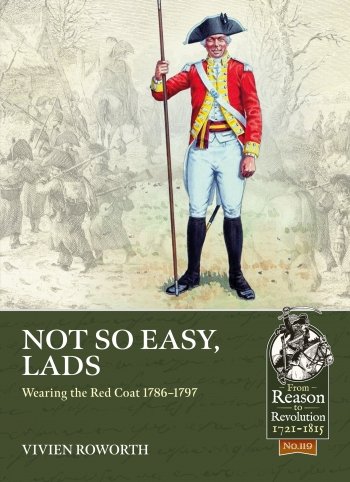-
Załączniki bezpieczeństwa
Załczniki do produktuZałączniki dotyczące bezpieczeństwa produktu zawierają informacje o opakowaniu produktu i mogą dostarczać kluczowych informacji dotyczących bezpieczeństwa konkretnego produktu
-
Informacje o producencie
Informacje o producencieInformacje dotyczące produktu obejmują adres i powiązane dane producenta produktu.HELION
-
Osoba odpowiedzialna w UE
Osoba odpowiedzialna w UEPodmiot gospodarczy z siedzibą w UE zapewniający zgodność produktu z wymaganymi przepisami.
First-hand unpublished eye-witness accounts of redcoats, particularly of redcoats in Georgian Britain, surface infrequently. Here the personal and public life in the letters of Serjeant Major William Roworth to his wife form the basis of one particular journey. A journey which was experienced by thousands of his fellow soldiers. Roworth’s 44th (East Essex) Regiment of Foot was just one of many destined for duty on the Continent, where it joined the Duke of York’s army as reinforcements during the War of the First Coalition. The men had barely started service when the British were involved in a retreat, of some 300 miles, that was as ignominious as it was disastrous. Disease and sickness were rife, and the loss of men, women, and children in the appalling frozen conditions was considerable.
On their return to Britain in the late Spring of 1795, the prompt order for service in the West Indies was greeted by the men of the 44th with disbelief and fear. Soldiers spared a death in battle, would likely succumb to one of the range of diseases on offer in the Caribbean. First, however, there was a series of huge winter storms in the Atlantic to fight through, ably described by those who survived the experience, and there were many who did not. It took four attempts and five arduous months for the enormous fleet under Rear Admiral Sir Hugh Clobery Christian, to finally trickle into Bridgetown, Barbados. The 44th Foot then took part in the reduction of the island of St Lucia, and continued to fight against the brigands, who were unwilling to be ruled by the British. All the time, dysentery, malaria, and yellow fever continually thinned the ranks, devastating the 44th and many other regiments.
Roworth’s letters highlight so many of the concerns of soldiers then and now: love, duty, ambition, children, extended family, sickness at home, the difficulties of distance – all these and more. He wore his red coat with pride from the day he volunteered until the day of his death – and rightly so. Roworth’s letters are also supplemented with the regimental records of the 44th, official dispatches, and the accounts of other soldiers to create a more complete picture of a redcoat battalion at home and at war, at the close of the eighteenth century.








